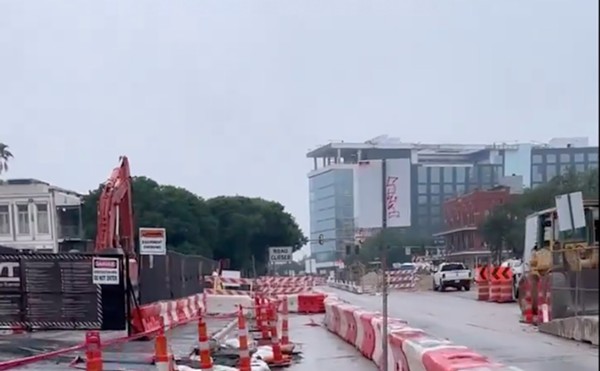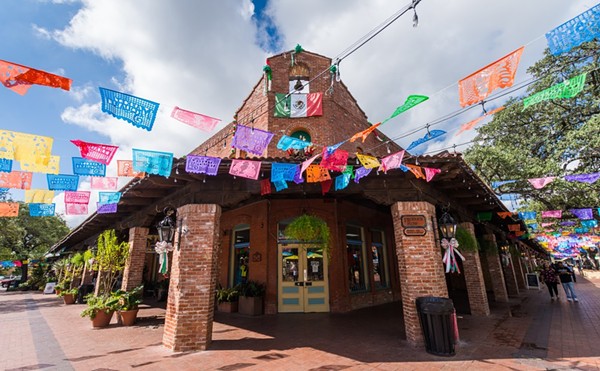Hard times have befallen Acapulco. In the '70s, American snowbirds once flocked here; Bob Barker, host of The Price Is Right, regularly awarded an Acapulco vacation package to the lucky contestant who most closely guessed the cost of a refrigerator or box of Rice-A-Roni.
But Acapulco's unmanaged growth demonstrates how tourism can build a city, and then destroy it. Through negligence, city leaders allowed Acapulco's environment to disintegrate; through single-mindedness, officials steered the city into economic dependence on a single
| "Tourism is our principal industry and this dependence is generally negative" — Hernandez Carillo, Guerrero's Secretary of Tourism |
It is a cautionary tale for any city - including San Antonio - that hitches any part of its star to tourism.
"We are full of shit during the rainy season," said Dr. Alejandro Oscós, who runs Colegio de Nautilis, where he teaches students environmental science. A neuroscientist-turned-ecologist, Oscós has studied the health - and sickness - of the Acapulco Bay since 1987. He says that his unpopular findings - the bay is tainted with lead, chromium, and sewage - prompted Mexican officials to censor his results, which despite their efforts, eventually became public.
You don't need to be a scientist to know the water is dirty. Jump in the blue bay and feel plastic bags tickle your legs in the surf. When the coffee-colored foam advances and retreats from the shore, it leaves in its wake straws, bottles, and unrecognizable garbage. In addition to the pollutants, overfishing has gutted the bay, and some species have been wiped out, Oscós says, adding, "Tourism will not save the planet."
Although Acapulco stretches along the Pacific Coast, water quantity is also an issue for the rest of the state. While other parts of the mountainous state of Guerrero undergo water rationing, Acapulco is exempt from such restrictions, so as not to inconvenience the tourists.
Until 1947, when the Mexican government built the highway from México City to Acapulco, the city was a mere fishing village, a wild jungle teeming with rare animals and plants. By the '60s, several factors had contributed to Acapulco's growth: With additional roads and improvements, a 14-hour odyssey from México City to Acapulco has been trimmed to a four-hour trip. During the Cuban Revolution, tourists found it difficult to relax on Havana's beaches; the subsequent American embargo forbade U.S. citizens from traveling there. Thus, Acapulco, with its beautiful vistas, tropical weather - and foreign investment encouraged by Mexican president Miguel Alemán - became a thriving city on the sea.
Yet, the towering hotels, packed cantinas, and exploding population soon exacted their toll. Cruise ships that appeared to be innocently gliding on the water were actually dumping garbage and sewage in the bay. Although the city built two treatment plants near a lagoon to help offset the pollution, and some hotels run their own treatment plants, they are working at only 50 percent, Oscós says.
"Hotels say they will invest in controls, but there is no money when it comes time," Oscós explains. "Politicians change, and they don't know about environment. We have a lot of environmental laws - new developments have to submit impact studies - but there is a problem with enforcement.
"Acapulco went out of hand. If a lot of people want to know where the nature and wilderness went, well, we killed nature."
While unchecked tourism has destroyed Acapulco's environment, the city's economy has also suffered in the past 20 years. You can see its demise in the abandoned buildings, but also in the people. Walk the streets in the early morning, when a few joggers and workers start to shake the city awake: Garbagemen collect trash bags from the strip's restaurants, but not before they break open the transparent sacks and pick through the warm, slick lettuce and broken eggshells for a bit of meat or a salvageable piece of fruit. On the streets and beaches, indigenous families come down from the mountains - where their farms have been laid to waste by erosion and poor soil - and sell iced drinks, trinkets, and hammocks.
"It is hard," says a woman named Maria, who sells tamarind and other small items in a stall on the Costera. "I make barely enough for me and my children to eat." Another young girl, six months pregnant with her second child, works in an un-air-conditioned tienda near a low-end hotel. She earns $45 for a 45-hour week.
In the '80s, Americans discovered Cancún, and they abandoned Acapulco; according to Mexican tourism statistics, only 13 percent of Acapulco tourists visit from the U.S. While the city has attracted middle-class Mexicans, their numbers have not compensated for the drop in American tourism, and only about half of the hotel rooms are occupied at any time.
With the tourist industry came the high expectations of jobs, says Hernández Carillo, assistant to Guerrero's Secretary of Tourism. With poverty endemic in the rest of Guerrero, residents have migrated to Acapulco searching for work. And despite tourism's slump, they continue to pour into the city, every day, cramming their families into one-room apartments and filthy hotels, up in the city's precarious hills, away from the bright lights of the Costera.
"The growth wasn't planned in Acapulco and there were problems," explains Carillo, adding the city is trying to push pricier hotels such as the Mayan Palace toward the Diamante Zone, an exclusive part of the bay. "It's not developing as quickly as we had hoped."
The money that flows from tourists' pockets into hotel and restaurant coffers doesn't rebuild Acapulco or Guerrero. The federal government collects the funds - a situation ripe for corruption - and then redistributes it to the state and cities. The money isn't reaching its destination; even at the height of Acapulco's popularity, Guerrero was - and remains - one of México's poorest states; many villages don't have roads, electricity, or running water.
"Tourism is our principal industry and this dependence is generally negative," Carillo says. "There have been efforts by the government to attract investments such as maquilas to diversify the economy, but the environmental impacts of maquilas, we are also concerned about that."
In its tourism literature, Acapulco glamorizes its landscape, nightlife, fun in the sun. Ironically, tourism has spoiled most of the city's selling points, and has damaged the area in ways from which it may never recover. The fish aren't coming back. The workers aren't making a living. And the city's answer seems to be to cater to the few elite who lounge in the Diamante Zone, shielding themselves from those realities. •


















